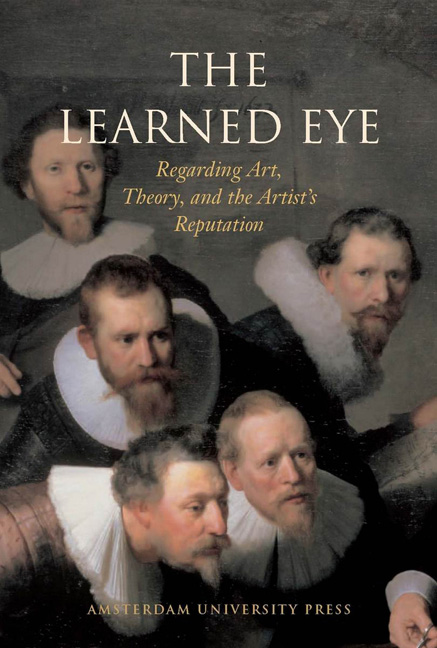Goltzius, Painting and Flesh; or, Why Goltzius Began to Paint in 1600
Published online by Cambridge University Press: 25 January 2021
Summary
For many visitors to the spectacular Goltzius exhibition held in 2003 in Amsterdam, New York and Toledo, the paintings would have come as a surprise. After admiring around 175 more or less chronologically arranged drawings, engravings and penworks, delicate virtuoso performances in the handling of line, one suddenly came to a group of eleven large and colourful paintings with rather naturalistic life-size figures, that seemed far removed from Goltzius’ work as a draftsman and engraver. Visitors may have wondered why Goltzius started to paint so suddenly and why so late in his career? Apart from that, many of them may have reacted in the same way as journalists who reviewed the exhibition in Dutch and American newspapers: ‘acres of erotic flesh’, ‘a lot of fleshy nudity’, or ‘all the paintings are about one thing: flesh, its texture, its colour, its chemistry. Willem de Kooning once said that oil paint was made for depicting flesh: Goltzius would probably have agreed.’ In fact, Karel van Mander already noted how ‘miraculously fleshily’ Goltzius’ painted nudes were, after having described his transformation into a painter as – indeed – a sudden occurrence: as if it were some kind of miracle. But how to explain this abrupt metamorphosis into a painter of lifelike human flesh, if we do not believe in miracles?
That was the question that urged itself upon me too, after having seen this exhibition. Several reasons have been given for Goltzius’ decision to start painting, often crediting Van Mander as being the prime influence. It has been argued repeatedly that Goltzius’ move to painting was theoretically inspired and followed Van Mander's ideals. Indeed, Van Mander called drawing the body and painting the soul of art. Several authors cited the lines from Van Mander's biography of Jacques de Gheyn, a pupil of Goltzius, in which he writes how De Gheyn moved from draftsman and engraver to painter. De Gheyn was of the opinion that his career as engraver had been a waste, because ‘oil painting, working with colour, was the highest endeavour in art and by far the best means to come as close as possible to nature in all her aspects by way of representation’.
- Type
- Chapter
- Information
- The Learned EyeRegarding Art, Theory, and the Artist’s Reputation, pp. 158 - 178Publisher: Amsterdam University PressPrint publication year: 2005



